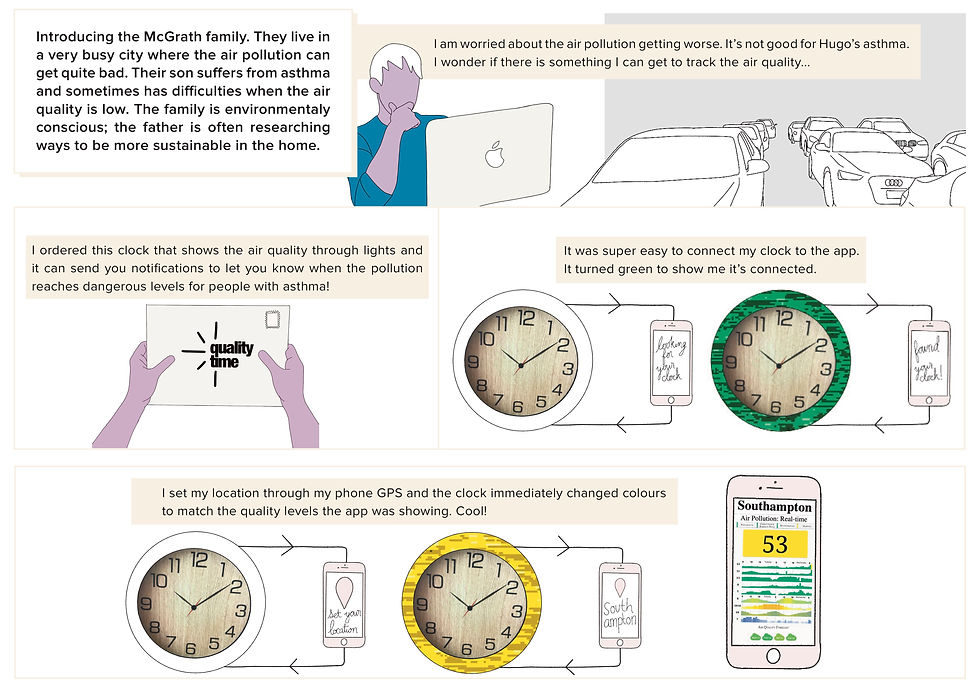010 - MATERIAL RESEARCH
- tiffanybachelet
- Nov 30, 2019
- 3 min read
Updated: May 3, 2020
These are my notes from reading the book “Fasion and Technology, a guide to materials and appications.” By Aneta Genova and Katherine Moriwaki

Lauren Bowker (THEUNSEEN) has developed a reactive ink that changes colour according to different fluctuations in the air, demonstrated in a couture capsule collection.
High fashion and the tech community are converging into one.
The innovation of new materials have always influenced fashion. As available materials change, designers adapt accordingly (technology determinism).
Many advances originally intended as solutions for industrial applications, have found unexpected applications in fashion. (page 7)
Ways in which fashion is consumed has multiplied – it’s readily available in an exponential amount of ways.
Technology and the body have always been intimately tied together – amplification and extention of human faculties through body-mounted or worn apparatus goes back to the start of human history.
One of the main criticism of wearable computers is the bulky form and cyborg appearance. It can feel obtrusive.
Hussayn Chalayan’s Airplane dress (2000) was often cited as visionary and inspiring others to explore computationally enhanced garments.
“Computational technology is able to utilise the metaphor of second skin both figuratively and literally”
The Maker Movement – a contemporary culture (2005)
These exemplify the hybrid craftsmanship of merging both traditional tools and approaches with emerging technology, often with an idiosyncratic aesthetic sensibility.
- A Key element of this movement is “open sourcing”
- Arduino played a big role in this.
Designers within this fashion and tech convergence that inspire me: Cute circuit, Idris Van Herpen,

Idris Van Herpen fashion show.
Conductive materials : Materials with the ability to conduct or transmit heat, electricity or sound.
Thread
Stainless steel > Plated silver as it does not oxidise and it is easy to wash. Plated silver tarnishes easily. The thread is a bit stiff and not very strong. It tends to get knotted very easily. The yarn can be mixed with regular yarn for different degrees of electrical resistance.
Wool
Made of very fine steel conductive filaments mixed with natural wool or polyester fibres. It is great for felting.
Fabrics
Can be woven or knit and they vary in structure. They can be very fine and see through mesh to densely woven fabrics like nickel and copper rip stop or even pure copper polyester taffeta.
Hook and Loop fastener
Very similar to Velcro – best for switches and/or connections
Tape
Most commonly copper or aluminium
Paint and inks
These are compounds that contain copper, carbon or silver. They can be in liquid form or prefilled in a pen. Pens are not very reliable for fabrics but better for prototyping.
Reactive Materials – These react to an external trigger and transform in some way.
Thermochromic ink
Pigments or dyes that change colours as a result of a temperature change. Can be used to reveal another layer of ink underneath or can layer inks with different temperature thresholds.
Wind reactive inks
Developed by British exploration house : THEUNSEEN. The ink changes colour on contact with the air around it. The material can be treated with liquid crustal to make it friction responsive.
Photochrimatic materials
These change colour with changes of light intensity or brightness. The normal state of this material is usually colourless or translucent and changes from that. When sunlight of UV radiation is applied the molecular structure of the material changes (which is reversible)
UV reactive paint, inks and threads
These respond to exposure to sunlight and UV. They can appear clear indoors and change to a bright colour. The pigments are very flexible and can be airbrushed or sprayed.
Hydrochromic ink
This reacts to exposure to water – typically white when applied to surfaces and becomes translucent when in contact with water. When dry, it goes back to its original state, but can be irreversible if chosen to.
Electroluminescence
This is a non thermal generation of light from a material when a high electrical field is applied to it. Because it typically has hard wire and the material is hard it works best in rigit structures.


Comments